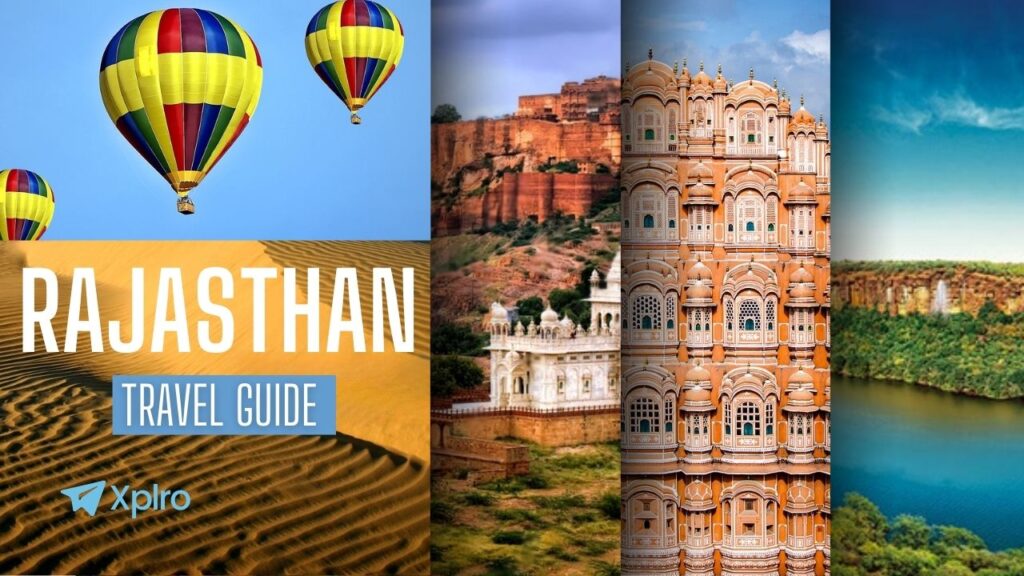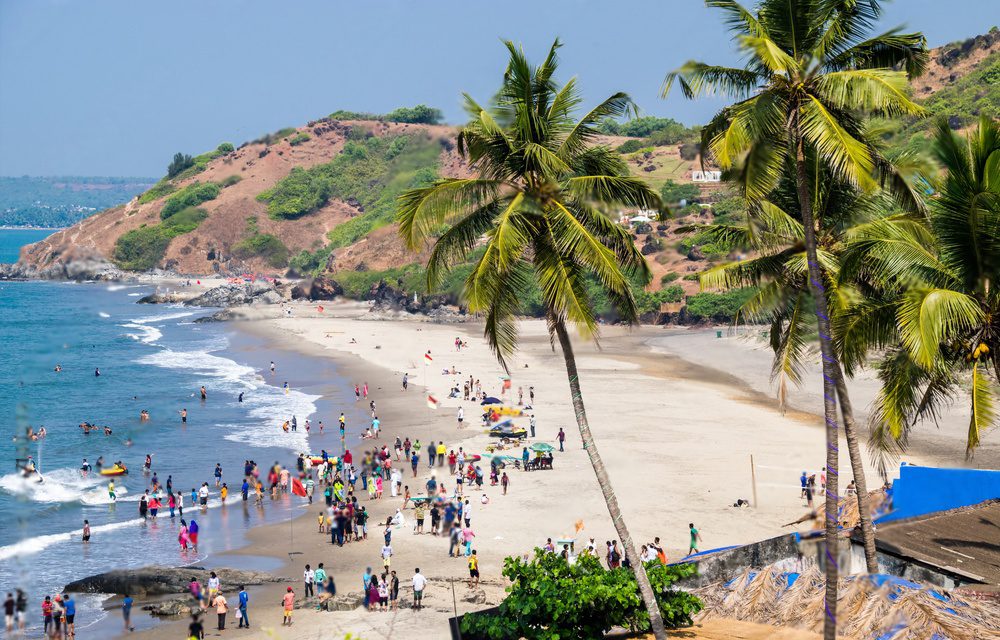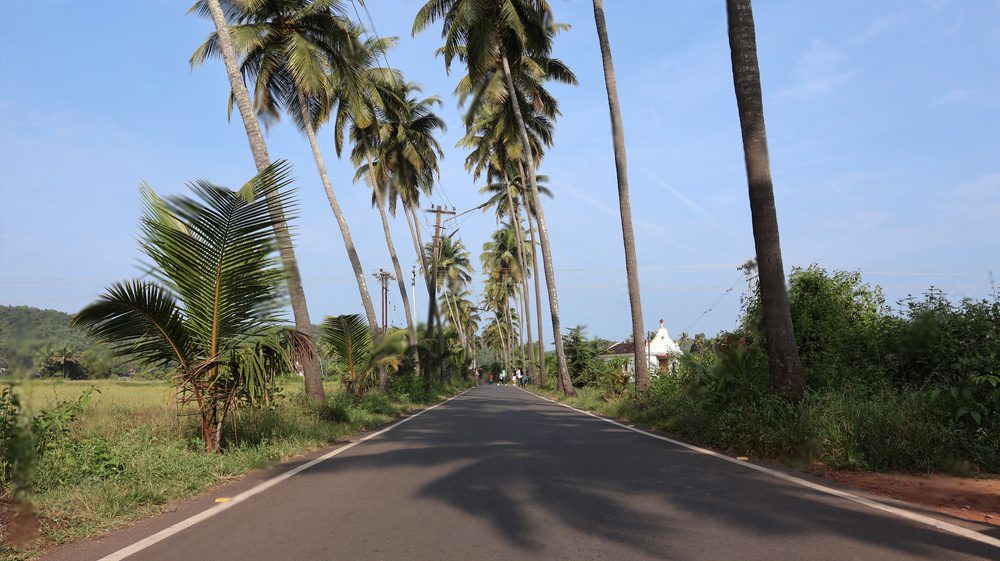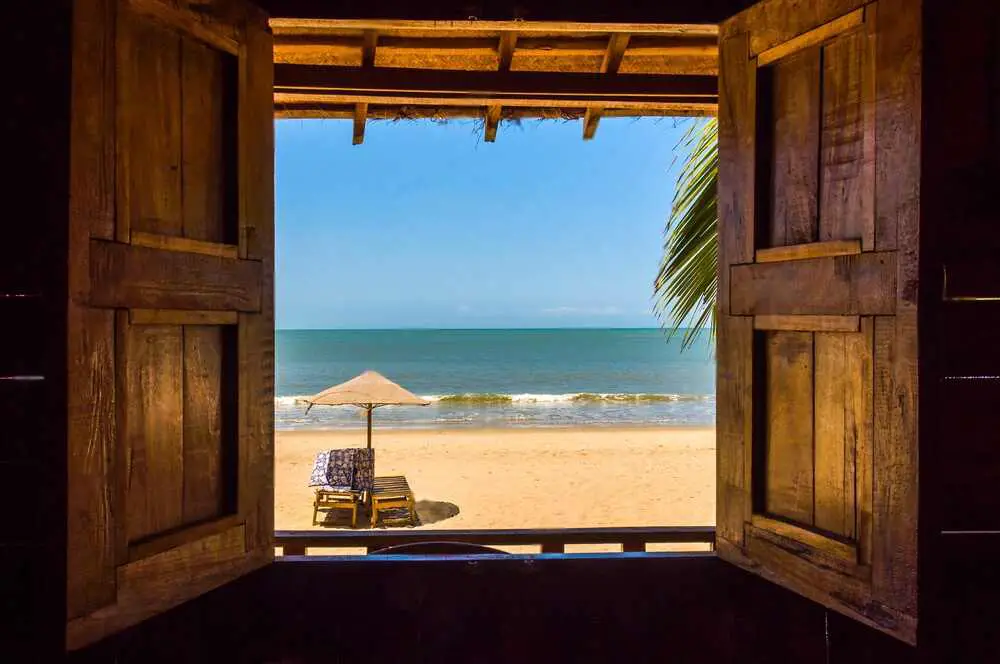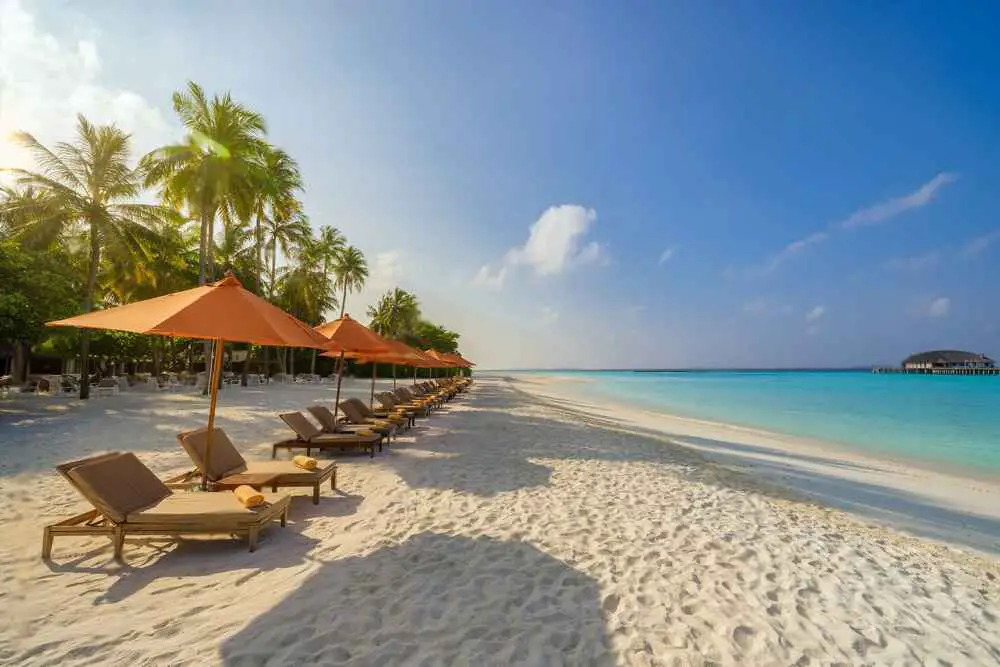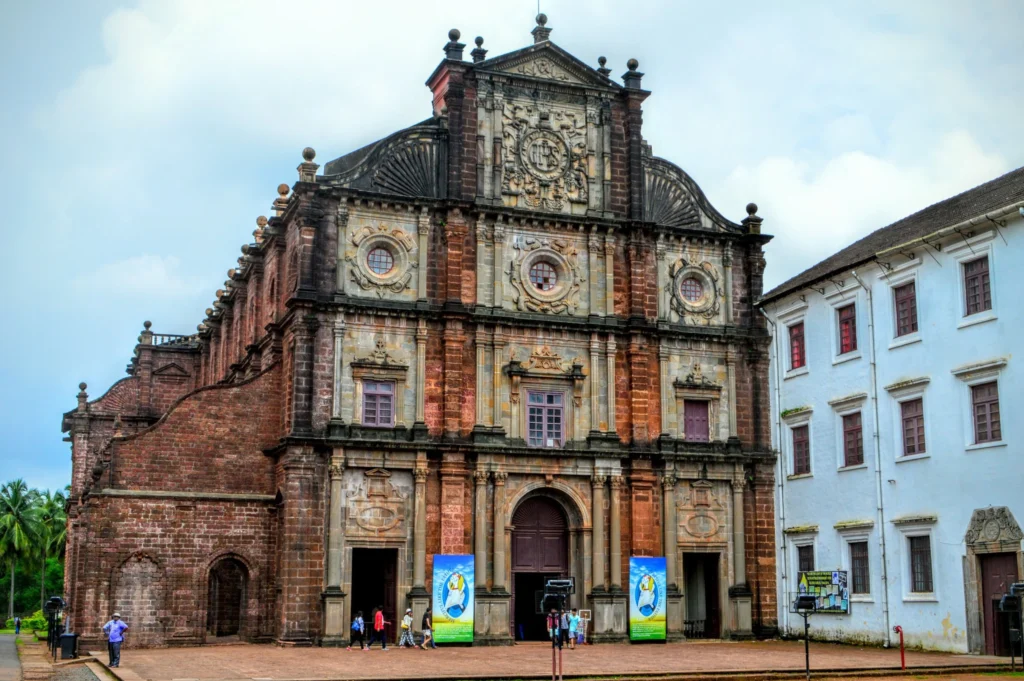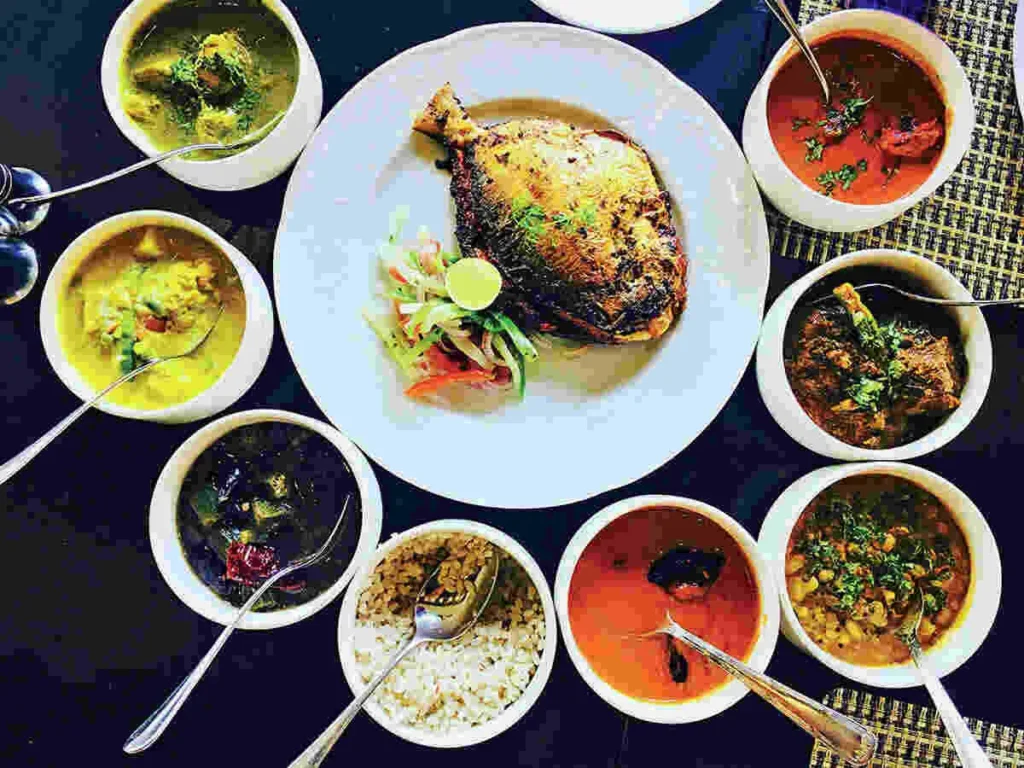Rajasthan is a land where golden dunes stretch towards the horizon, where majestic forts stand sentinel against time, and where vibrant bazaars overflow with stories whispered in silks and spices. This isn’t a scene from a fairytale – it’s Rajasthan, India, a jewel in the crown of the subcontinent, waiting to captivate you with its raw magic.
Whether you’re a solo adventurer seeking solitude under starlit skies, a family weaving memories in golden palaces, or a thrill-seeker chasing sunsets on camelback, Rajasthan beckons with open arms and promises an experience unlike any other. Get ready to lose yourself in its timeless charm, where history echoes in every step, spirituality lingers in the air, and adventure ignites around every corner.
Rajasthan, nestled in the northwestern embrace of India, is a land steeped in legend and lore. From the valiant Rajput warriors who built magnificent forts to the colorful nomadic tribes who paint the desert alive, its past whispers through crumbling ramparts and vibrant folk songs. But Rajasthan isn’t just a museum of the past; it’s a canvas splashed with vibrant colors, where modern cities rub shoulders with ancient villages, and bustling bazaars overflow with handicrafts that whisper tales of generations past.
This blog is your guide to unlocking the secrets of Rajasthan, your compass to experiences that transcend the ordinary. We’ll navigate you through the labyrinthine lanes of bustling Jaipur, stand in awe of the Amber Fort’s regal splendor, and lose ourselves in the ethereal beauty of Thar Desert’s sunrises. We’ll delve into the soul of this land, experiencing the warmth of local hospitality, savoring the fiery flavors of its cuisine, and discovering the rhythm of life that beats to the drums of tradition.
Ready to paint your own story on the canvas of Rajasthan? Let’s get started!
How to Reach Rajasthan:
Here’s a breakdown of the various ways you can arrive in Rajasthan:
By Air:
- Convenience and Speed: Flying is the quickest and most convenient way to reach Rajasthan, especially for long distances. The state boasts several well-connected airports, including:
- Jaipur International Airport (Sanganer): The largest airport in Rajasthan, offering domestic and international flights.
- Udaipur Airport (Dabok): Serving domestic flights, connecting you to major Indian cities.
- Jodhpur Airport: Another domestic airport offering connections within India.
- Smaller domestic airports exist in Bikaner, Jaisalmer, Kota, and other locations.
- Booking Flights: Numerous airlines operate flights to Rajasthan, allowing you to compare prices and choose the best option based on your budget and convenience.
By Train:
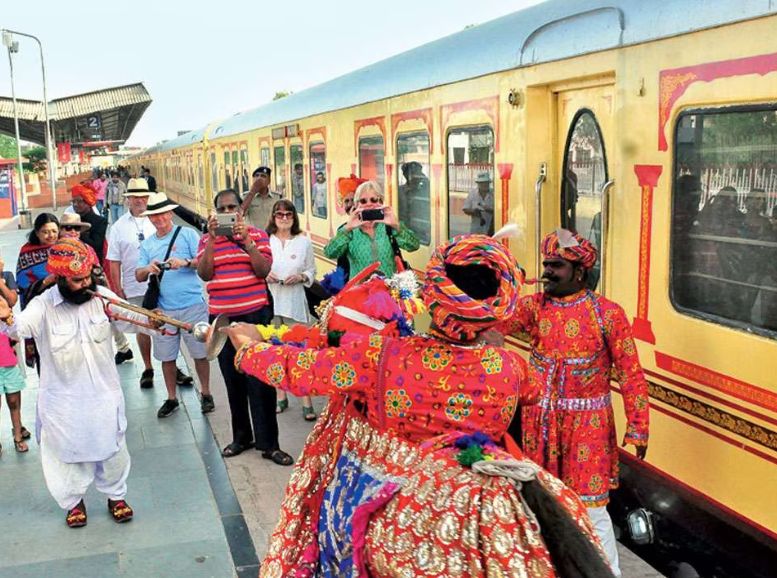

- Experience and Affordability: The Indian railway network is extensive and connects most major cities in India to Rajasthan. Trains offer a comfortable and affordable way to travel, allowing you to witness the diverse landscapes as you journey.
- Popular Routes: Several popular train routes connect various cities to Rajasthan, including:
- Delhi to Jaipur, Jodhpur, and Udaipur
- Mumbai to Kota and Jaisalmer
- Kolkata to Jaipur
- Chennai to Jodhpur and Jaisalmer
- Booking Tickets: Book your train tickets online or at railway stations in advance, especially during peak season.
By Road:
- Flexibility and Adventure: Traveling by road offers flexibility and allows you to stop at various destinations along the way. Rajasthan has a well-developed network of national highways and state roads.
- Bus Services: Numerous government and private bus services connect Rajasthan to other states. Consider booking your tickets in advance, especially during festivals or peak season.
- Self-Drive: If you’re up for an adventure, consider renting a car and exploring Rajasthan at your own pace. Ensure you have a valid driver’s license and are comfortable navigating unfamiliar roads.
Best Time to Visit:
Here’s a glimpse into the best times to visit, catering to various preferences:
For Pleasant Weather and Sightseeing:
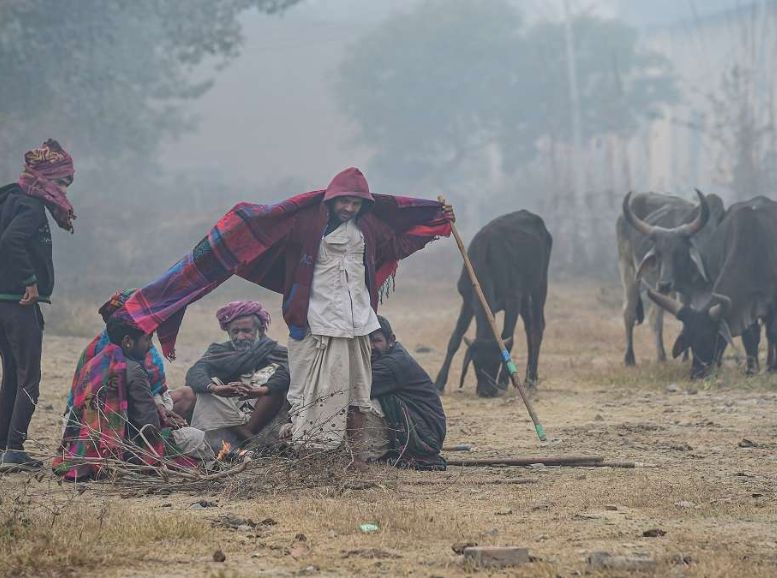

- October to March (Winter): This period is widely considered the ideal time to visit Rajasthan. With comfortable temperatures ranging from 10°C to 30°C, you can explore forts, palaces, and bustling cities without the scorching heat. This is also the peak season, so expect larger crowds and potentially higher prices.
For Budget Travelers:
- April to June (Summer): While summers in Rajasthan are known for their intense heat (up to 45°C), this period can be a good option for budget-conscious travelers. Hotel rates and flight prices often drop significantly during this time. However, be prepared for the heat and plan your sightseeing around the cooler mornings and evenings.
For Wildlife Enthusiasts:
- July to September (Monsoon): Although not ideal for sightseeing due to occasional showers, the monsoon season brings a refreshing change to the desert landscape. This period is also considered the best time for tiger safaris in Ranthambore National Park, as the animals are more active due to the availability of water.
For Festival Seekers:
- October & November: Witness the vibrant cultural tapestry of Rajasthan during these months. Major festivals like Diwali (Festival of Lights) and the Pushkar Camel Fair offer a unique and immersive experience. However, be prepared for larger crowds and potential accommodation shortages during these times.
Must-See Attractions:
Captivating Cities:
Jaipur, the Pink City:
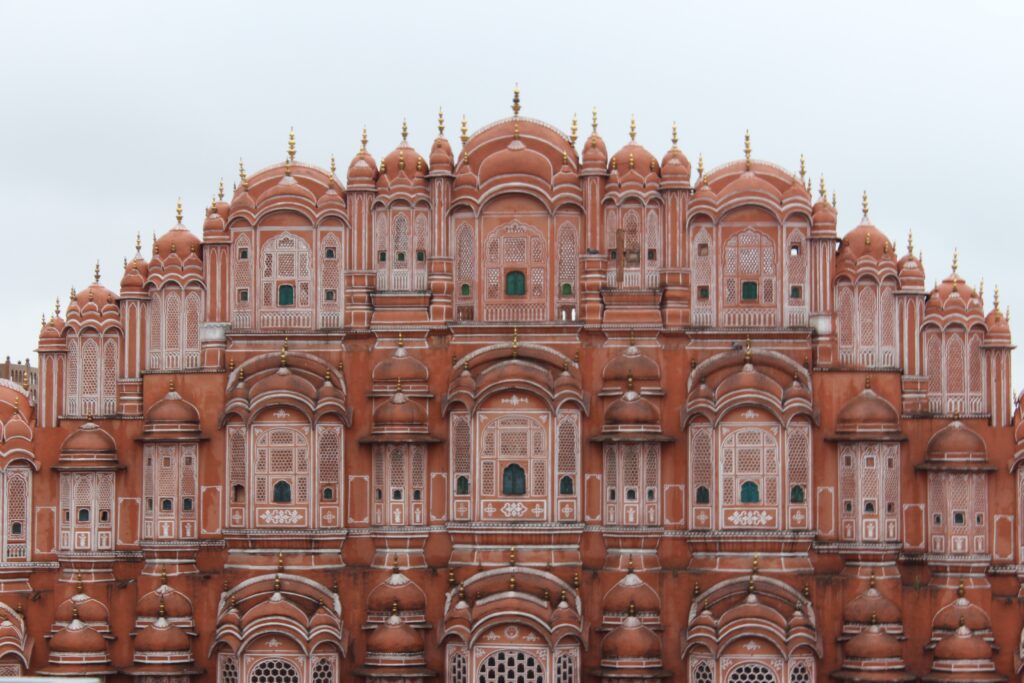

Nicknamed the Pink City for its painted buildings, Jaipur is a vibrant and historic city in Rajasthan. Explore the majestic Amer Fort, a masterpiece of Rajput architecture, and admire the intricate details of the Hawa Mahal, or “Palace of Winds.” Wander through bustling bazaars overflowing with colorful textiles, hand-crafted jewelry, and unique souvenirs.
Udaipur, the City of Lakes:


Udaipur, a city nicknamed “the City of Lakes,” is a breathtaking gem in Rajasthan. Imagine sparkling blue lakes, majestic palaces, and serene gardens, all woven together to create a picture-perfect landscape. Take a boat ride on Lake Pichola, the heart of the city, and admire the City Palace adorned with intricate carvings. Explore Jag Mandir, a palace seemingly floating on the water, and soak in the romantic ambiance.
Jaisalmer, the Golden City:
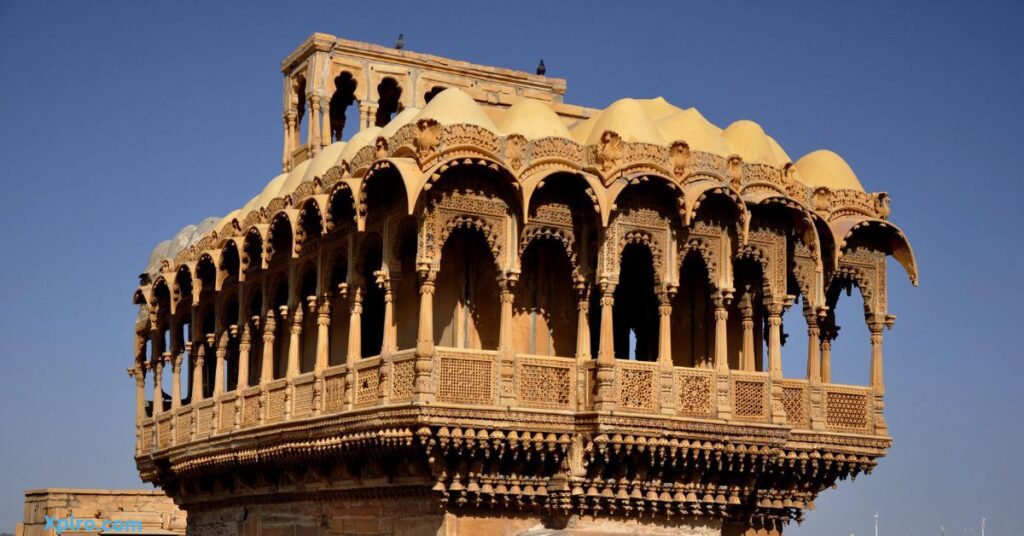

Nicknamed the “Golden City,” Jaisalmer paints a magical picture in the heart of the Thar Desert. Its ancient fort, perched atop a golden sandstone hill, gleams in the sun, showcasing the city’s rich history. Wander through narrow lanes lined with magnificent Jain temples, intricately carved with stories of Gods and mythical creatures.
Jodhpur, the Blue City: Rajasthan
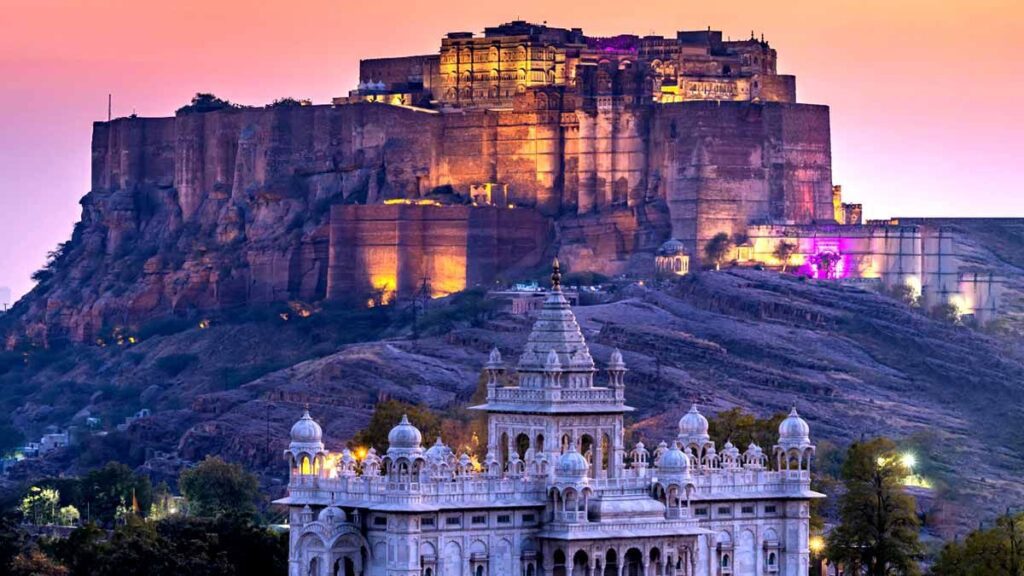

Jodhpur, a vibrant city in Rajasthan, India, is nicknamed the “Blue City” for a reason. Many houses in the old city are painted a striking shade of blue, creating a visually stunning and unique urban landscape. This tradition is believed to have originated from the desire to keep homes cool during the hot summer months, as blue reflects sunlight and helps maintain cooler temperatures.
Ajmer, The Cultural City:


Ajmer, a city bathed in history and spirituality, is a must-visit on any Rajasthan itinerary. Explore the dargah of Sufi saint Khwaja Moinuddin Chishti, a revered pilgrimage site for people of all faiths. Immerse yourself in the serene ambiance of the Ajmer Sharif Dargah, a complex adorned with intricate marble carvings. Witness the unique Indo-Islamic architecture of Adhai Din Ka Jhonpra, an archaeological marvel showcasing the city’s rich heritage.
Historical & Cultural Marvels:
Amber Fort, Jaipur:


Amber Fort, a majestic crown jewel of Jaipur, Rajasthan, boasts a rich history. Built in the 16th century, this fort served as the royal residence for the Rajput rulers. Soaring high on a hill, it offers stunning views of the surrounding landscape. Intricate carvings and colorful murals adorn its walls, whispering tales of a bygone era.
Mehrangarh Fort, Jodhpur:


Towering over the vibrant blue city of Jodhpur, Mehrangarh Fort stands majestic, a symbol of Rajput valor and architectural brilliance. Built in the 15th century, it’s a maze of courtyards, palaces, and museums, offering breathtaking views of the surrounding landscape. Climb up the winding path or take the elevator to explore the fort’s rich history and immerse yourself in the grandeur of a bygone era.
Hawa Mahal, Jaipur:


In the heart of Jaipur, the pink city of India, lies a fascinating landmark called Hawa Mahal, meaning “Palace of Winds.” This five-story building isn’t a typical palace though. Its unique feature is its hundreds of tiny windows, called jharokhas, beautifully adorned with intricate latticework. These windows weren’t just for decoration; they allowed cool air to flow through the palace, offering a natural air conditioning system in the hot desert climate.
Pushkar:
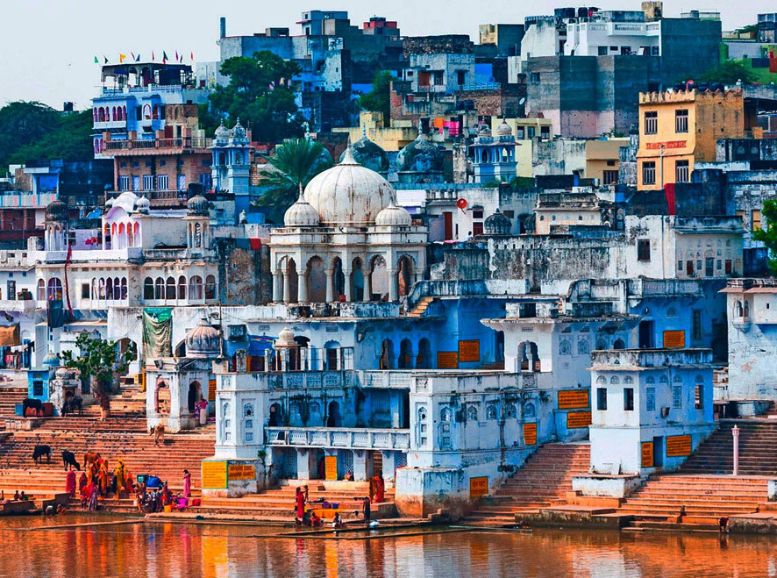

Nestled amidst the golden sands of Rajasthan lies Pushkar, a captivating town steeped in myth and legend. Renowned for its holy Pushkar Lake, believed to be created by Lord Brahma himself, the town attracts pilgrims and travelers alike. The air hums with spirituality as devotees take dips in the sacred waters, seeking blessings and inner peace.
Mount Abu:


Nestled amidst the verdant Aravalli hills, Mount Abu offers a refreshing escape from Rajasthan’s desert heat. This hill station boasts a cool and pleasant climate year-round, making it a popular retreat for both locals and tourists. Explore the serene Dilwara Jain Temples, renowned for their intricate marble carvings, or take a refreshing boat ride on Nakki Lake, surrounded by scenic hills.
Chittorgarh Fort:


Chittorgarh Fort, the king of forts in Rajasthan, stands tall and proud on a hill, like a giant guarding the land. It’s one of the biggest forts in India, filled with stories of brave warriors and powerful queens. You can explore ancient palaces, grand temples, and even climb up giant towers for breathtaking views.
Bikaner:


Bikaner, the “City of Bika,” is a vibrant city steeped in history and culture. Founded in the 15th century, it boasts a majestic fort, Junagarh, showcasing intricate carvings and architectural marvels. Wander through bustling bazaars overflowing with colorful textiles and handcrafted souvenirs. Immerse yourself in the city’s vibrant spirit during the annual Camel Festival, a unique spectacle celebrating Rajasthan’s desert heritage with lively music, colorful processions, and of course, majestic camels.
Shekhawati:
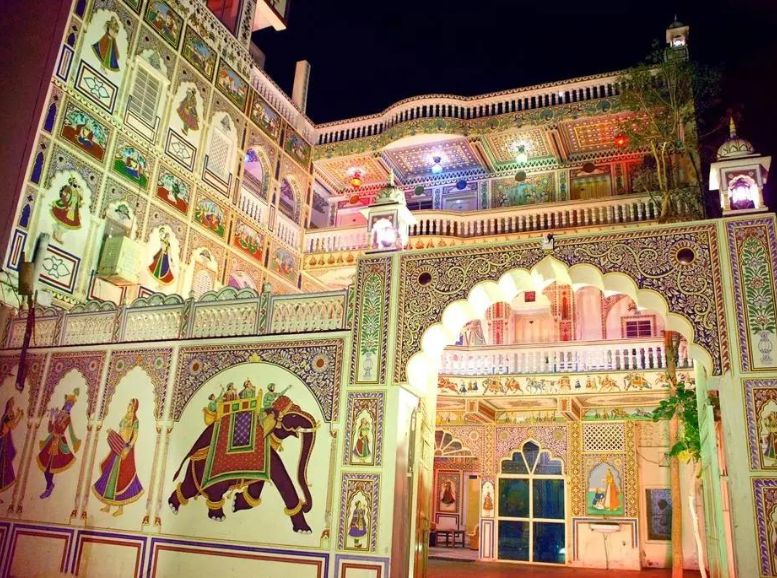

Step back in time and explore the vibrant frescoes of Shekhawati. This charming region, nestled in Rajasthan, boasts towns like Mandawa, Nawalgarh, and Jhunjhunu, each adorned with colorful paintings that tell stories of gods, heroes, and everyday life. Wander through narrow streets, marvel at the intricate artwork on old havelis (mansions).
Bundi:


Bundi, a charming town nestled amidst the Aravalli hills, offers a glimpse into Rajasthan’s rich history and vibrant culture. Wander through its narrow lanes, marveling at the architectural beauty of its forts and palaces. Explore the unique stepwells, once vital sources of water, and delve into the town’s fascinating “Baori” culture, where community life thrives around these historical water structures.
Kumbhalgarh Fort:


Nestled amidst the majestic Aravalli hills, Kumbhalgarh Fort is a must-visit for any traveler seeking a glimpse into Rajasthan’s glorious past. This massive fort, boasting the second-longest wall in the world, served as a refuge for Mewar rulers for centuries. Explore its ancient temples, palaces, and towering ramparts, all whispering tales of battles and bravery.
Neemrana:


Neemrana, a village boasting a rich past and captivating present. Once a refuge for Rajput descendants, Neemrana offers a unique experience. Stay in a magnificent 16th-century fort converted into a heritage hotel, and explore the surrounding beauty. Visit ancient temples and stepwells, or simply soak in the breathtaking views from the fort’s ramparts.
Ranakpur Jain Temple:
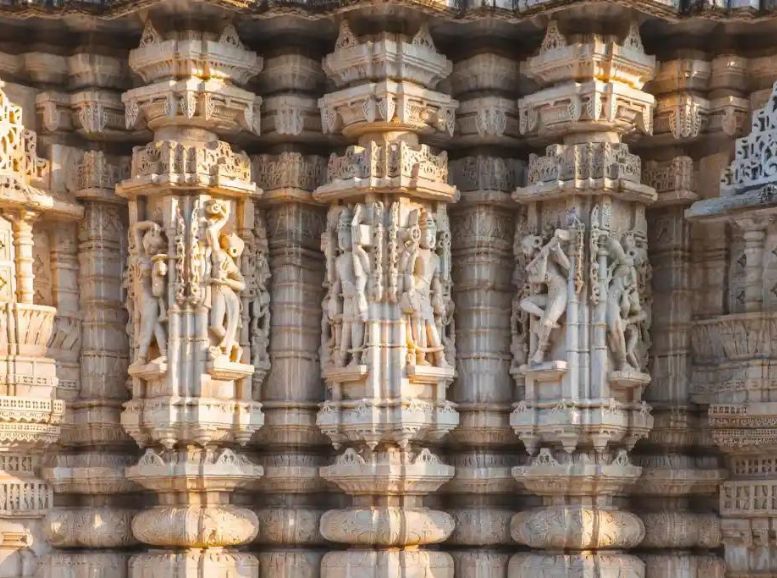

The magnificent Ranakpur Jain Temple, a marvel of intricate marble carvings and architectural splendor. Dedicated to the first Jain Tirthankara, Adinath, this 15th-century temple boasts over 1400 unique pillars, each adorned with exquisite artistry. Visitors can wander through the vast halls, marveling at the intricate ceilings and delicate sculptures that tell stories of Jain faith and philosophy.
Nathdwara:


Nathdwara, a town renowned for its spiritual significance. This charming place is particularly sacred for Vaishnavites, housing the revered Shrinathji Temple. The temple’s intricate architecture and vibrant daily rituals draw devotees from all corners of the country.
Garadia Mahadev Temple:


Tucked away in a scenic gorge, Garadia Mahadev Temple offers a unique experience for travelers seeking tranquility and cultural immersion. Descend a few steps to reach the temple, dedicated to Lord Shiva. The real charm lies in the surrounding beauty. Panoramic views of the Chambal River and the lush greenery will leave you breathless.
Fatehpur:


Fatehpur, a town brimming with hidden treasures. Often overlooked, this gem boasts exquisite havelis, mansions adorned with intricate carvings that whisper tales of a bygone era. The town’s star attraction is the opulent Salim Singh Haveli, a masterpiece showcasing the artistic heritage of the region.
Khimsar Fort:


Khimsar Fort, a majestic 16th-century marvel. Once a royal residence, this fort boasts a rich history and now offers a unique blend of heritage charm and modern comforts. Visitors can explore the grand halls and courtyards, or step back in time and stay in luxurious rooms within the fort itself.
Thar Desert:
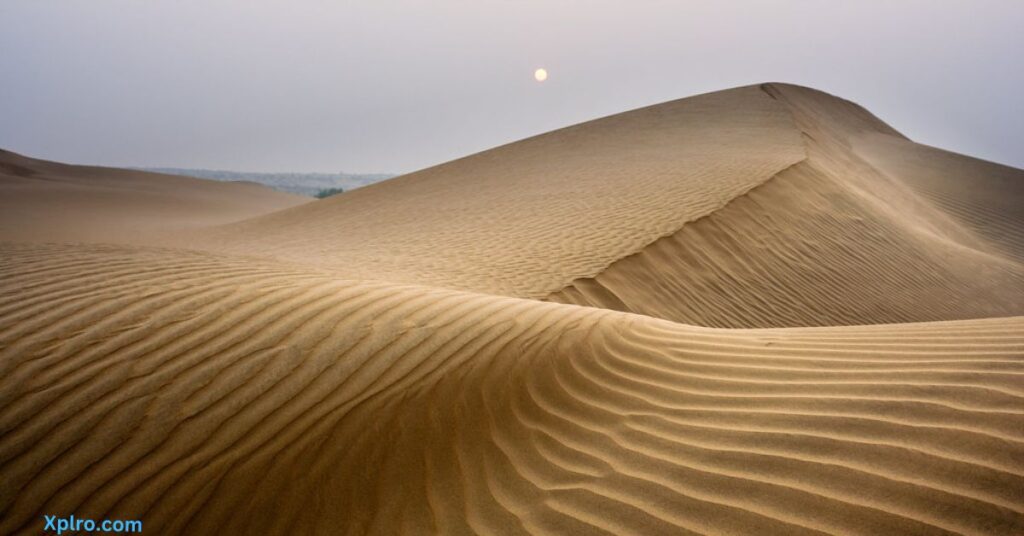

The Thar Desert, a jewel of arid beauty, unfurls across the northwestern expanse of India. Often called the Great Indian Desert, it sprawls over a vast 200,000 square kilometers, ranking as the world’s 17th largest desert and the 9th largest subtropical one. Rolling sand dunes define the landscape, occasionally broken by patches of hardy vegetation. The climate here is a tale of two extremes: scorching summers that push the mercury above 50°C and winters that dip close to freezing.
Yet, beneath this seemingly harsh facade lies a surprising tenacity. The Thar Desert shelters a unique ecosystem where plants and animals have ingeniously adapted to thrive in the arid conditions. It’s also a land pulsating with culture, where generations have woven vibrant traditions, folklore, and festivals that resonate with the indomitable spirit of the desert communities.
Wildlife Wonders:
Ranthambore National Park:


Calling all wildlife fans! Ranthambore National Park is a must-visit. Tigers roam freely here, and you might even spot one on a jeep safari. This park isn’t just about big cats though. Keep your eyes peeled for deer, monkeys, and colorful birds as you explore the dry forests and glistening lakes.
Keoladeo National Park (Bharatpur Bird Sanctuary):


Keoladeo National Park, also known as the Bharatpur Bird Sanctuary, is a haven for feathered friends. This beautiful place is like a giant wetland, with lots of lakes, swamps, and grasslands. Over 370 different bird species call it home, from majestic eagles to colorful storks.
Adventures and Activities:
Desert Safari in Thar Desert:
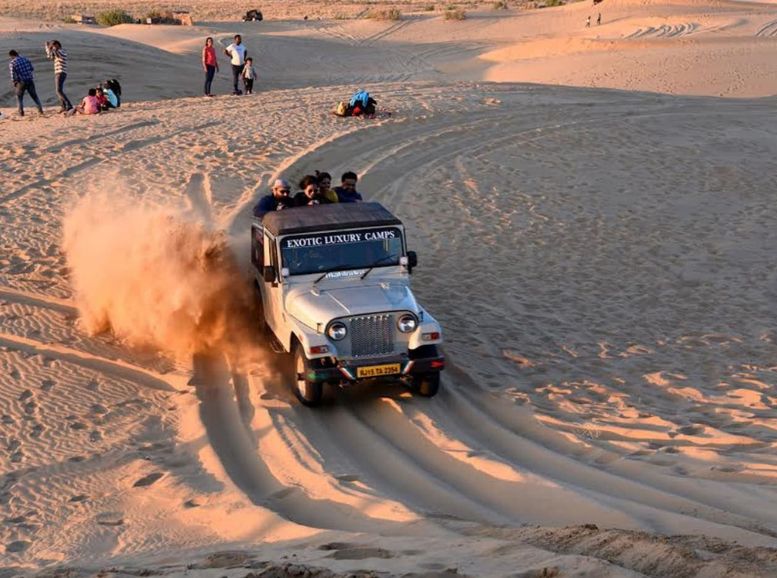

Journey into the heart of Rajasthan on a desert safari in the Thar Desert! Imagine golden sands stretching as far as the eye can see, dotted with the silhouettes of majestic dunes. Explore this wonderland on camelback, feeling the gentle sway as you traverse the ancient landscape.
Embark on a camelback journey through undulating dunes, camp under starlit skies, and experience the magic of the desert at sunset.
Hot Air Ballooning over Jodhpur:
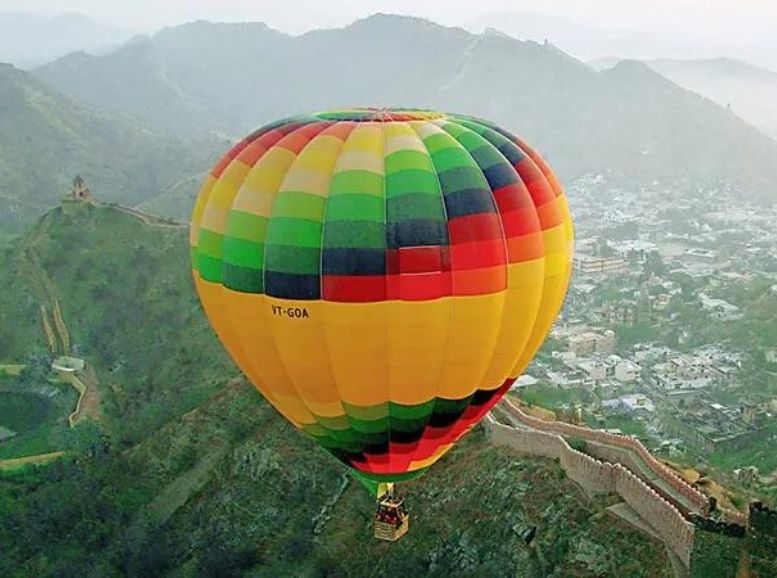

Soar above the vibrant city of Jodhpur on a magical hot air balloon ride. Witness the iconic Mehrangarh Fort rise majestically from the maze of blue houses below. As you gently drift across the sky, capture breathtaking panoramic views of the Thar Desert and its rugged landscapes. This once-in-a-lifetime experience promises a unique perspective of Jodhpur.
Float like a dream above the Blue City, witness the cityscape unfurl beneath you, and capture breathtaking panoramic views.
Trekking in Aravalli Hills:
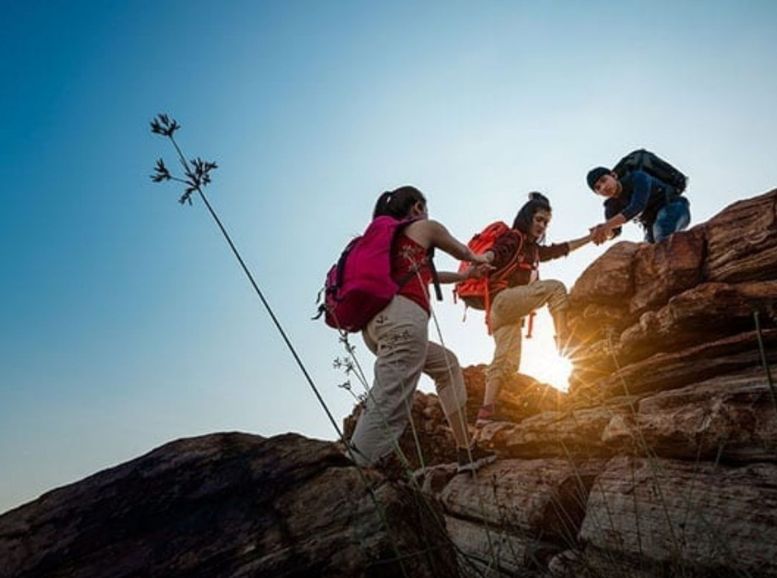

Lace up your boots and conquer the majestic Aravalli Hills! These ancient mountains weave their way through Rajasthan, offering breathtaking trails for trekkers of all levels. Hike amidst lush greenery, encounter hidden waterfalls, and witness panoramic vistas that will leave you speechless.
Explore the rugged beauty of these ancient hills, discover hidden waterfalls and ancient temples, and reconnect with nature.
Beyond Sightseeing:
- Pushkar Camel Fair: Immerse yourself in the vibrant chaos of this annual fair, witness colorful parades of camels, and experience the rich cultural tapestry of Rajasthan.
- Rural Rajasthan: Escape the city bustle and step into a time capsule. Visit traditional villages, experience the warmth of local hospitality, and learn about age-old customs and crafts.
- Hit the bustling Chowk markets of Jaipur: Wander through a labyrinth of colors and spices, bargain for handcrafted textiles and trinkets, and savor street food delicacies like samosas and pakoras. Let the cacophony of voices and vibrant sights transport you to the heart of Rajasthan.
- Attend a traditional puppet show (Kathputli): Marvel at the intricate art of Rajasthani puppetry, as colorful, hand-stitched puppets dance and tell stories passed down through generations. This family-friendly experience offers a glimpse into the region’s rich cultural heritage.
Local Experiences:
- Witness the vibrant Holi festival: Drench yourself in the kaleidoscope of colors, dance to the rhythm of dhol drums, and experience the joyous spirit of Rajasthan. It’s an explosion of sensory overload, where laughter mingles with the scent of spices, and strangers become instant friends in a shared celebration of life.
- Learn the art of block printing in Sanganer: Get your hands dirty and create your own vibrant textiles, using generations-old techniques passed down through families. The rhythmic pounding of wooden blocks against blocks of carved wood, the intricate patterns emerging on cotton sheets, and the satisfaction of creating something unique make this an unforgettable experience.
- Take a cooking class in a Thar Desert village: Learn to cook under the desert sky, master the art of traditional Rajasthani dishes like fiery Laal Maas (mutton curry) and melt-in-your-mouth Dal Baati Churma (lentil curry with roasted bread), and savor the flavors that have nourished generations. As you share laughter and stories with your hosts, you’ll discover the heart and soul of Rajasthan on a plate.
Foodie Delights:
Rajasthani cuisine is a symphony of bold flavors, a testament to the land’s resilience and fiery spirit. Get ready to tantalize your taste buds with:
- Dal Baati Churma: This classic Rajasthani dish offers the perfect balance of textures and flavors. Spicy lentil curry (dal) pairs with crispy baati (fried bread) and crumbly, sweet churma (crushed bread with jaggery), creating a symphony of tastes in every bite.
- Laal Maas: Don’t be intimidated by the fiery color! This mutton curry, cooked with chilies, yogurt, and spices, is a slow-cooked masterpiece, the tender meat falling off the bone and bursting with flavor.
- Ghewar: This sweet, deep-fried pastry, dipped in sugar syrup, is a dessert unlike any other. Its flaky layers, drenched in sweetness, melt in your mouth, leaving you wanting more.
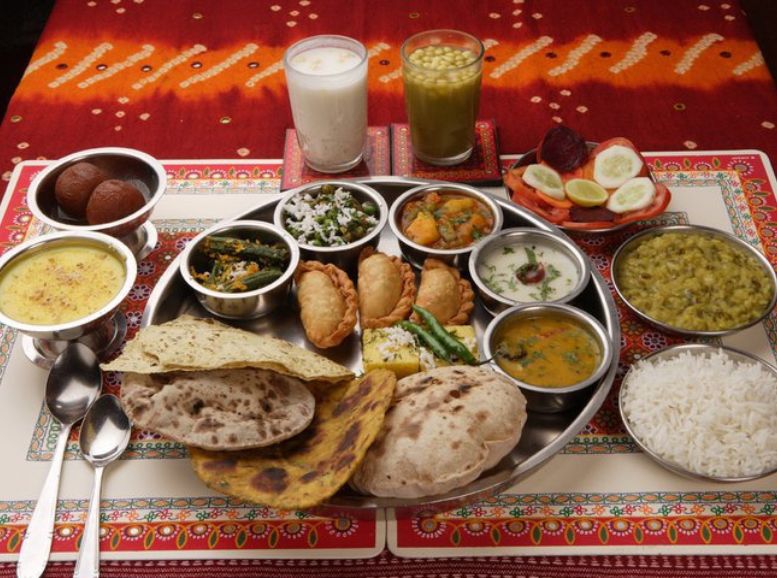

Travel Tips:
- Transportation: Buses and trains offer affordable options for budget travelers, while taxis and cars provide flexibility for families and adventurers. Rickshaws and auto rickshaws are readily available in cities for short trips.
- Budgeting: Rajasthan caters to all budgets. Budget-friendly stays are available in hostels and guesthouses, while luxury resorts offer pampering experiences. Street food and local meals are delicious and affordable, while sit-down restaurants cater to diverse preferences.
- Packing Essentials: Pack for the desert heat in summer (lightweight, breathable clothing and sun protection) and warm layers for winter. Comfortable shoes are essential for exploring forts and villages. Respectful attire is recommended for religious sites.
- Safety Considerations: Rajasthan is generally safe for travelers. Be aware of petty theft in crowded areas and exercise caution at night. Always respect local customs and traditions, especially when visiting religious sites.
Conclusion:
Rajasthan is a kaleidoscope of experiences, a land where history whispers in palaces, adventure dances on desert sands, and flavors linger on your tongue long after you leave. Whether you seek the grandeur of royal forts, the serenity of hidden temples, or the thrill of camel safaris, Rajasthan welcomes you with open arms and invites you to paint your own story on its canvas.
Here, amidst the vibrant colors and enchanting tales, you’ll discover that Rajasthan isn’t just a destination—it’s a feeling. It’s the warmth of a stranger’s smile, the rhythm of drums echoing through ancient alleys, and the lingering taste of spices on your tongue. It’s the sensation of sand beneath your feet as you watch the sun set over the Thar Desert, and the awe you feel as you stand before centuries-old forts that have witnessed the rise and fall of empires.
Rajasthan is a place that touches your soul, ignites your imagination, and leaves you forever changed. It’s a reminder that the world is full of magic, waiting to be discovered—and that the most incredible journeys are often those that take us beyond our expectations and into the heart of a place we never knew we needed.
So, pack your bags, embrace the unknown, and let Rajasthan weave its magic into your life. Uncover its secrets, embrace its spirit, and create memories that will forever hold a special place in your heart. With Xplro as your guide, you’re sure to uncover the hidden gems, the authentic experiences, and the true essence of this enchanting land.
Happy travels, explorers!
From the team at Xplro, we invite you to explore Rajasthan and create your own unforgettable adventure. Let us help you plan your trip, discover hidden gems, and experience the magic of this captivating destination.
FAQs on Traveling to Rajasthan:
1. What is the best time to visit Rajasthan?
- October to March (winter) offers pleasant weather, but it’s peak season. April to June (summer) is budget-friendly but scorching hot. July to September (monsoon) is good for wildlife viewing but not ideal for sightseeing. Consider festivals like Diwali (October/November) but expect crowds.
2. How do I get to Rajasthan?
- Fly into Jaipur, Udaipur, Jodhpur, or other airports. Take a train for an affordable and scenic journey. Travel by bus for flexibility or consider renting a car for self-exploration.
3. What are the must-visit places in Rajasthan?
- Explore the iconic forts and palaces in Jaipur, Jodhpur, and Udaipur. Go on a wildlife safari in Ranthambore National Park. Immerse yourself in the cultural experience of Pushkar and Ajmer. Witness the architectural marvels of Chittorgarh Fort and Ranakpur Jain Temple.
4. What are some hidden gems in Rajasthan?
- Discover the fresco-painted towns of Shekhawati. Explore the charming town of Bundi with its stepwells and forts. Stay in a heritage hotel converted from a 16th-century fort in Khimsar or Neemrana.
5. What kind of clothes should I pack?
- Pack light, breathable cotton clothes for summer and warmer clothes with a light jacket for winter. Pack a scarf or shawl for visiting religious sites. Consider comfortable walking shoes and sun protection.
6. Is Rajasthan safe for solo travelers?
- While generally safe, exercise caution, especially as a solo traveler. Be aware of your surroundings, dress modestly in religious places, and avoid carrying large amounts of cash.
7. What currency is used in Rajasthan?
- The Indian Rupee (INR) is the official currency. ATMs are widely available in major cities, but it’s advisable to carry some cash for smaller towns and emergencies.
8. Do I need a visa to visit Rajasthan?
- Visa requirements depend on your nationality. Check with the nearest Indian embassy or consulate for specific information.
9. Can I bargain in Rajasthan?
- Bargaining is common in markets and with street vendors. Be polite and respectful while negotiating prices.
10. What is the local language spoken in Rajasthan?
- Hindi is the most widely spoken language. English is understood in tourist areas. Learning a few basic Hindi phrases can be helpful.
11. What food should I try in Rajasthan?
- Rajasthan offers a variety of vegetarian and non-vegetarian dishes. Sample “Dal Baati Churma,” a traditional Rajasthani meal, or savor the unique flavors of “Laal Maas” (red meat curry). Don’t miss the local sweets like “Ghewar” and “Mohanthal.”
12. How much does a trip to Rajasthan cost?
- Costs vary depending on your travel style, accommodation choices, and activities. Budget for flights/trains, accommodation, food, transportation, and entrance fees.
13. Is tipping expected in Rajasthan?
- Tipping is not mandatory but appreciated for good service at restaurants, hotels, and with guides. A small tip (around 10%) is considered appropriate.
14. What festivals are celebrated in Rajasthan?
- Rajasthan has a vibrant calendar of festivals throughout the year. Diwali (Festival of Lights), Pushkar Camel Fair, and Holi (Festival of Colors) are some of the most popular.
15. What are some cultural norms to be aware of in Rajasthan?
- Dress modestly, especially at religious sites. Remove shoes before entering temples and mosques. Be respectful of local customs and traditions.
